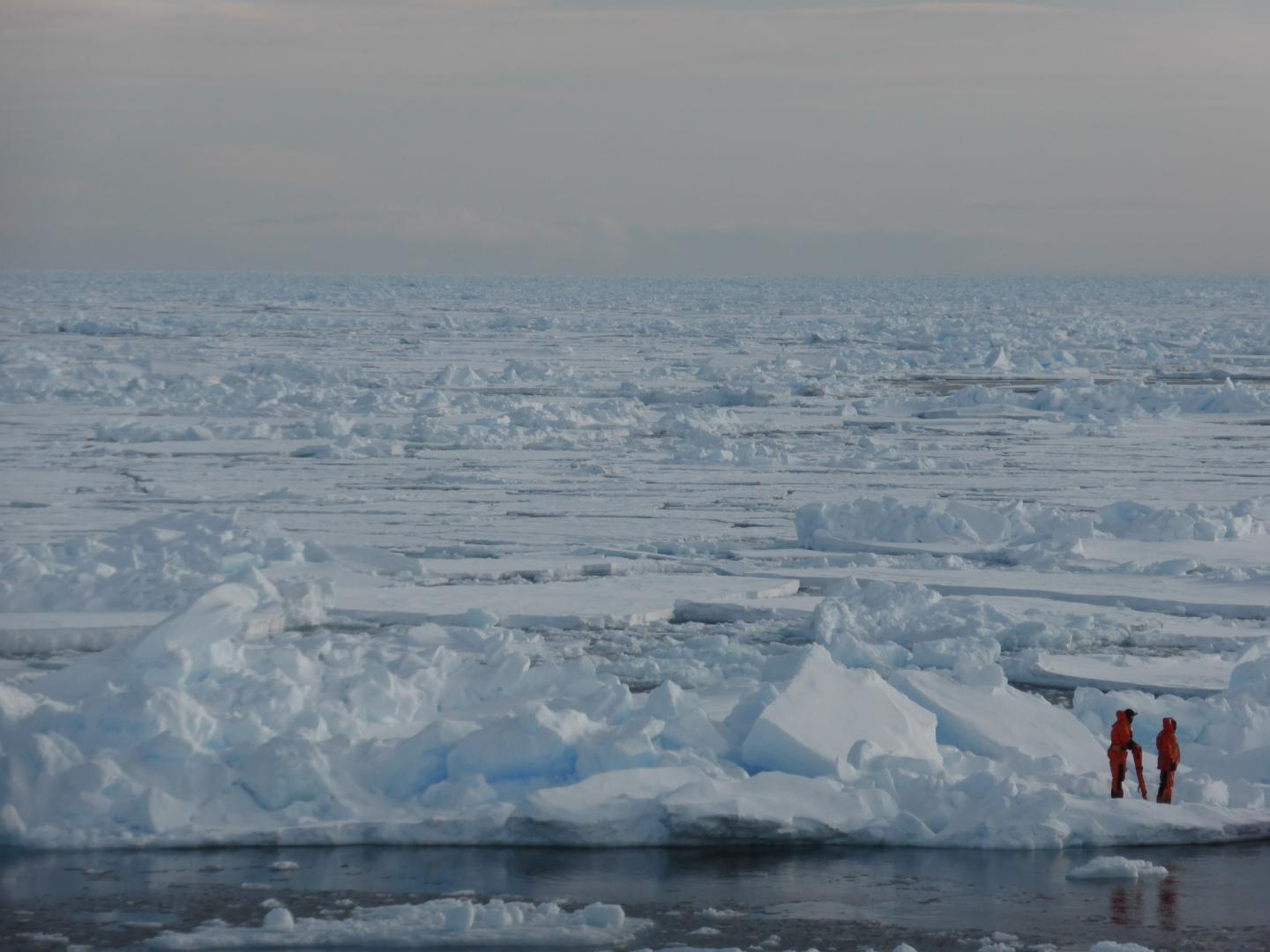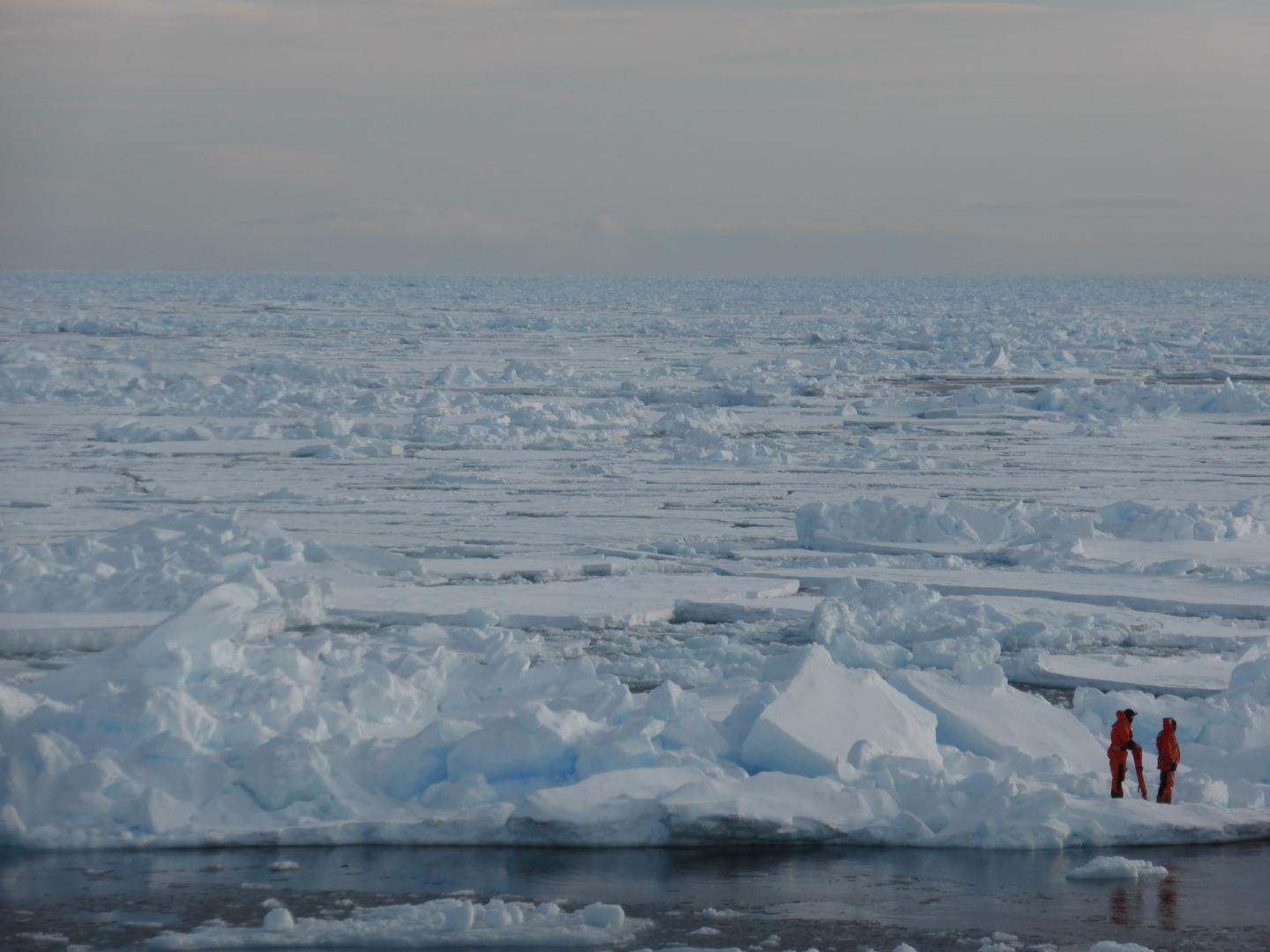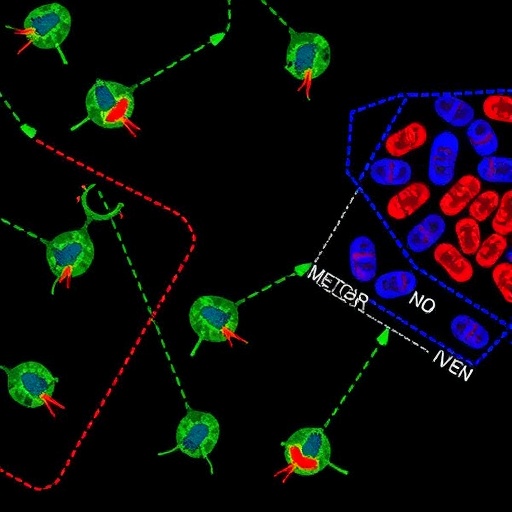
Credit: Dirk Notz
For each tonne of carbon dioxide (CO2) that any person on our planet emits, three square metres of Arctic summer sea ice disappear. This is the finding of a study that has been published in the journal Science this week by Dirk Notz, leader of a Max Planck Research Group at the Max Planck Institute for Meteorology and Julienne Stroeve from the US National Snow and Ice Data Centre. These figures enable us for the first time to grasp the individual contribution to global climate change. The study also explains why climate models usually simulate a lower sensitivity than can be detected in observations. It concludes that the two degrees Celsius global warming target agreed on in the most recent UN Climate Conference will not allow Arctic summer sea ice to survive.
The rapid retreat of Arctic sea ice is one of the most direct indicators of the ongoing climate change on our planet. Over the past forty years, the ice cover in summer has shrunk by more than half, with climate model simulations predicting that the remaining half might be gone by mid-century unless greenhouse gas emissions are reduced rapidly. However, a number of studies have indicated that climate models underestimate the loss of Arctic sea ice, which is why the models might not be the most suitable tools to quantify the future evolution of the ice cover.
To address this issue, a new study in the journal Science now derives the future evolution of Arctic summer sea ice directly from the observational record. To do so, the authors examine the link between carbon-dioxide emissions and the area of Arctic summer sea ice, and find that both are linearly related. "The observed numbers are very simple", explains lead author Dirk Notz. "For each tonne of carbon dioxide that a person emits anywhere on this planet, three square metres of Arctic summer sea ice is lost".
Frankfurt – San Francisco return: five square metres of sea ice less
"So far, climate change has often felt like a rather abstract notion. Our results allow us to overcome this perception", says co-author Julienne Stroeve. For example, it is now straight-forward to calculate that the carbon dioxide emissions for each seat on a return flight from, say, London to San Francisco causes about five square metres of Arctic sea ice to disappear."
While climate models also simulate the observed linear relationship between sea ice area and CO2 emissions, they usually have a much lower sensitivity of the ice cover than has been observed. The Science study finds that this is most likely because the models underestimate the atmospheric warming in the Arctic that is induced by a given carbon-dioxide emission. "It seems that it's not primarily the sea ice models that are responsible for the mismatch. The ice just melts too slowly in the models because their Arctic warming is too weak", says Stroeve.
Another 1000 gigatonnes of CO2 and sea ice will be stripped by September
Regarding the future evolution of Arctic sea ice, the internationally agreed objective to limit global warming to two degree Celsius is not sufficient to allow Arctic summer sea ice to survive. Given the observed sensitivity of the ice cover, the sea ice will be gone throughout September once another 1000 gigatonnes of carbon dioxide have been emitted. This amount of emissions is usually taken as a rough estimate of the allowable emissions to reach the two degree Celsius global-warming target. Only for the much lower emissions that would allow one to keep global warming below 1.5 °C, as called for by the Paris agreement, Arctic summer sea ice has a realistic chance of long-term survival, the study authors Dirk Notz and Julienne Stroeve conclude.
###
Original publication
Dirk Notz und Julienne Stroeve
Observed Arctic sea-ice loss directly follows anthropogenic CO2 emission
Science, 4 November 2016; doi: 10.1126/science.aag2345
Media Contact
Dr. Dirk Notz
[email protected]
49-404-117-3163
@maxplanckpress
http://www.mpg.de





